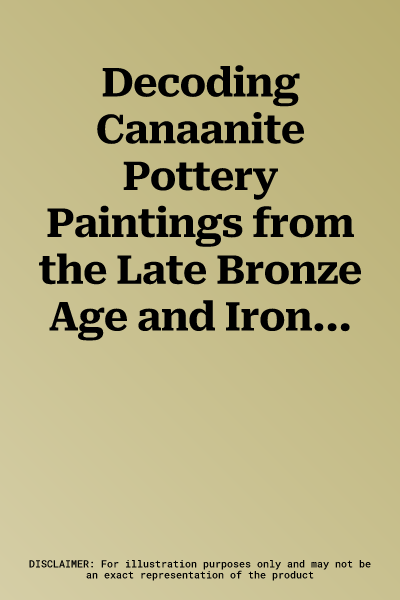This book presents a systematic study of the decorative motifs and
designs found on painted Canaanite pottery vessels excavated in
Palestine and dating back to the Late Bronze Age and Iron Age I. The
study is based on an analysis of 3,225 painted vessels and sherds. One
of its most important goals is to provide a taxonomy of the decorative
motifs and designs found on the vessels. To achieve this goal, each of
the motifs and designs is carefully described and codified as a unit
within a system of classification grouping them into categories,
sub-categories, classes, types, and sub-types. Based on this
classification system, statistical figures representing the frequency of
occurrence of the decorative motifs and designs are produced. The degree
of popularity and the temporal or spatial distribution of each of the
motifs and designs are thus clarified. Based on the statistical
analysis, tree iconography (representing particularly the date-palm,
often called "tree of life") was confirmed to be the most prominent and
representative feature of the Canaanite pottery painting tradition. The
motif most commonly found on handles and best known as "Union Jack" mark
is demonstrated to be a schematized representation of the date-palm.
Canaanite tree iconography was probably associated with a fertility
cult, but there is no direct evidence associating it with the goddess
Asherah. The cultural origins of painted pottery traditions, colors used
for decoration, archaeological contexts where the decorative motifs come
from and their socio-political meanings are also considered in detail.
Although during the Late Bronze and Iron IA ages the inhabitants of
Canaan were politically controlled by New Kingdom Egypt, Egyptian
influence on their pottery painting tradition was insignificant. Western
Asiatic features prevail much more in the main motifs and design
elements, their iconography, design, and style. The archaeological
contexts of painted Canaanite vessels indicate that the decorative
motifs reveal the Canaanites' desire for blessing in present life rather
than in the afterlife. The rise and decline of the painted pottery
phenomenon is most likely associated with socio-political changes. The
Canaanite pottery painting tradition declined notably in the 11th
century BCE, following the end of Egyptian rule in Canaan. In the 10th
century BCE, tradition virtually disappeared, indicating the rise of a
new socio-political order in Canaan.

